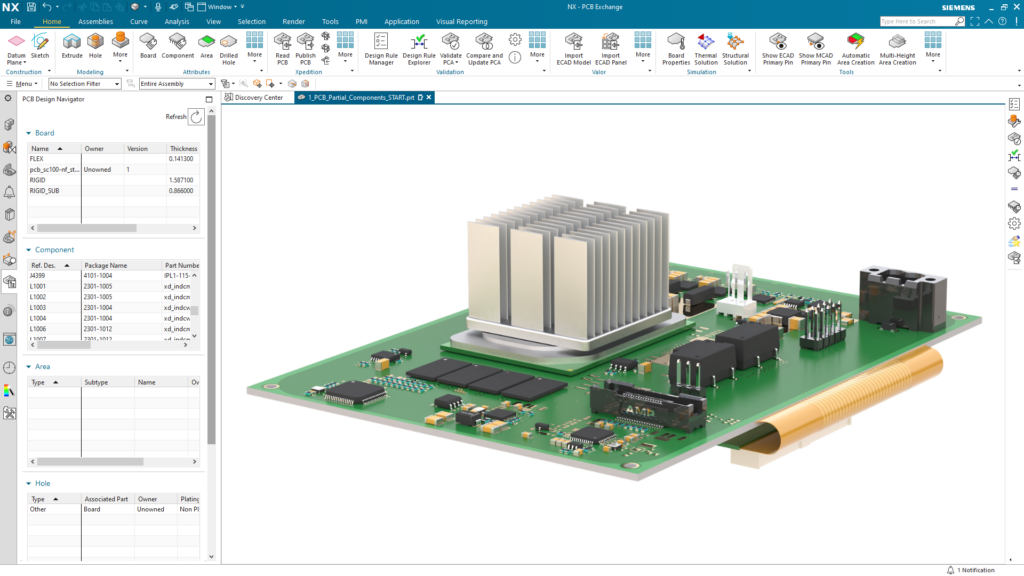Why is cloud-based electronics design and manufacturing on the rise?

Small- and medium-sized businesses (SMBs) are vital to the electronics industry. They provide many of the products and services that larger businesses and consumers depend on. SMBs make the printed circuit boards (PCBs) in all electronic devices. They also design and manufacture the electronic components that go into these devices. In addition, SMBs provide assembly, packaging and other services to the electronics industry. The growing trend of SMBs providing contract manufacturing services is due to an effort to avoid financial investments in production lines and take advantage of the design expertise and manufacturing capabilities of the service providers. [1]
As an example, in India, increasing purchase of electronics is expected give a boost to the top lines of SMBs in the current fiscal year (FY23). In FY22, SMBs accounted for 25 to 35 percent of the sector, playing a key role in both consumer and industrial electronics. This fiscal year, SMBs can expect to log a revenue growth of 13 to 16 percent year-on-year (YoY), driven by cell phones, consumer and industrial electronics, computer hardware and strategic electronics. [2]

SMBs are under pressure to adopt recent technologies and expand their product portfolios. They are also investing in innovative technologies, such as IoT, artificial intelligence, 5G cellular and cloud computing to gain a competitive edge. The adoption of these technologies will help SMBs improve their operational efficiency, reduce costs, offer better customer experiences and scale their businesses.
However, SMBs face many challenges. They often lack the financial resources and the economies of scale that larger businesses have. As a result, they may find it difficult to compete against large enterprises. In addition, SMBs may have difficulty accessing the latest technology and tools due to their cost and the resources required to onboard them. They may also struggle to attract and retain qualified employees.

More cloud-based solutions
The market for cloud-based tools is growing, with businesses of all sizes adopting these tools to improve their efficiency, agility and productivity. An international survey conducted by O’Reilly in July 2021 found that 90 percent of companies are using cloud computing, up from 88 percent in 2020. [4]
A 2019 report on SMBs in the United States noted that more than 80 percent used digital tools for internal management and logistics to improve business processes and productivity. [3] Examples of these tools are cloud-based software solutions, enterprise resource planning (ERP) software, and proprietary software to connect sales with supply chain operations
There are a few key enablers to the trend:
- Cloud-based tools require no onsite installation or integration, eliminating a significant burden on information technology (IT) and administration staff.
- Cloud-based tools are becoming increasingly user-friendly, which makes them easier for businesses to adopt.
- The cost of cloud-based tools is dropping, making them more affordable for businesses. Some of the cost decreases are the natural result of technologies maturing. However, a major element in their growing affordability is lower operational costs that come with use of cloud-based tools. A 2020–2021 study found that, for companies requiring fewer than 1,000 licenses of Unified Communications as a Service (UCaaS) cloud-based software tools, the annual total spend per license was about 37 percent less than it would be for each on-premises license. This considers the license cost and operational costs such as IT staff, equipment maintenance, training and power. [5]
- The security and reliability of cloud-based tools has made significant improvements, which makes them more attractive to businesses. For example, security measures are being incorporated at the development stage and updated regularly during the entire lifecycle of software tools, instead of being an afterthought. Customized cloud disaster recovery strategies and secure access service edge (SASE) are now commonly implemented as part of the roll out strategy for cloud-based tools.
Who is migrating to the cloud?
In July 2021, half (48 percent) of the companies responding to a survey said they are planning to migrate at least 50 percent of their applications to the cloud within a year, while one-fifth (20 percent) said they plan to migrate all their applications to the cloud [4]. SMBs are migrating more of their workloads and data to the cloud than enterprises. According to a 2022 Flexera report, 63 percent of SMB workloads and 62 percent of data would reside in the cloud by 2023. In comparison, 55 percent of enterprise workloads and 54 percent of data would be in the cloud. [6]
Data security is vital to cloud migration. In the past, some organizations hesitated to put certain types of data in public cloud infrastructure, but that is changing as organizations gain confidence in cloud providers’ data security practices. Over 50 percent of companies report they will consider moving some or all their corporate financial data or sensitive consumer data to the cloud. [6]
Beyond security considerations, as companies progress along their journey to the cloud, their perception of the challenges are changing. A Forrester study noted that in 2020, companies ranked their top two cloud migration challenges as identifying the best workloads to run on the cloud and training staff on cloud services, in that order. By November 2021, the top two spots were, in order, post-migration optimization of apps, and performance issues related to workloads that had been migrated to the cloud. [7]
Despite initial challenges, companies are seeing significant IT and business benefits from moving workflows to the cloud. In the same study, 78 percent of businesses attributed improved or consistent application workload performance to cloud migration. Sixty percent cited easier IT operations and management as one of the most important IT outcomes they had experienced. Asked about the most important business outcomes, 53 percent cited better end-user experience from apps running in the cloud, and 52 percent cited improved ability to focus on innovation rather than on day-to-day infrastructure management. [7]
Design automation is already there
As the world increasingly moves toward cloud-based services, more companies are finding that their electronic design needs can be met using cloud-based tools and platforms. While some companies still cling to on-premises electronic design automation (EDA) tools, the trend is moving toward the cloud. For example, Siemens NX X design software is available as a cloud-based service, and it offers various cloud-based design tools for several other products.

Smaller companies also now offer cloud-based electronic design. Upverter, EasyEDA, Circuit Make, PCBway and others offer cloud-based design platforms that include component libraries and enable collaboration on design projects. As the cloud continues to mature, we can expect even more companies to make the switch in the years to come.
It is not just software companies that are shifting EDA to the cloud. In May 2022, Advanced Micro Devices announced it would move some of its EDA workloads for chip design onto a public cloud. Its stated reasons for the move were to extend the capabilities of its own data centers and gain advanced networking, storage and artificial intelligence capabilities.
(In part two of this two-part blog series, we will look at how cloud-based design for manufacturing can benefit small- to medium-sized businesses.)
References:
- “The Worldwide Electronic Manufacturing Services Industry is Projected to Grow at a CAGR of 8.64% Between 2020 and 2025,” Globe Newswire, 23 October 2020, https://www.globenewswire.com/news-release/2020/10/23/2113660/0/en/The-Worldwide-Electronic-Manufacturing-Services-Industry-is-Projected-to-Grow-at-a-CAGR-of-8-64-Between-2020-and-2025.html
- “Revenue outlook bright for electronics SMEs: Crisil SME Tracker,” Business Standard, 27 May 2022, https://www.business-standard.com/article/sme/revenue-outlook-bright-for-electronics-smes-crisil-sme-tracker-122052500866_1.html
- Deloitte Financial Advisory, S.L.U., “The performance of Small and Medium Sized Businesses in a Digital World,” Deloitte, 2019.
- M. Loukides, “The Cloud in 2021: Adoption Continues,” O’Reilly Media Inc., 2021.
- R. Gareiss, “Cost of moving to the cloud drops with time and experience,” Tech Target, 17 April 2020, https://www.techtarget.com/searchcio/tip/Cost-of-moving-to-the-cloud-drops-with-time-and-experience
- “Flexera 2022 State of the Cloud Report,” Flexera, 2022.
- “State of Public Cloud Migration, 2022,” Forrester, 2022.
Susan Kayesar holds a BSc from Tel Aviv University and brings 20-plus years of experience in the PCB design and verification industry. She is an expert at cultivating creative software solutions to meet real-world customer needs and, in the past, has provided support, training, and consultancy services for both simple and complex product implementations. In her spare time, Susan enjoys travel, hiking, and coffee. Susan is a Technical Product Manager for Siemens Digital Industries Software.


